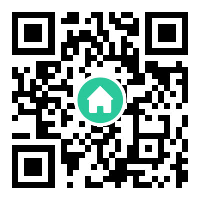Introduction to Telegram Bot Development
Telegram bot development has emerged as a powerful way to automate tasks, enhance user engagement, and streamline communication within the Telegram ecosystem. With over 800 million monthly active users, Telegram provides a robust platform for developers to create bots that can perform a wide range of functions—from simple reminders to complex integrations with external APIs. Whether you're a seasoned developer or a beginner, understanding the fundamentals of Telegram bot development opens doors to building interactive and scalable solutions.
Why Build a Telegram Bot?
Telegram bots offer unparalleled flexibility. They can serve as customer support assistants, news aggregators, gaming platforms, or even e-commerce tools. Unlike traditional apps, bots operate within Telegram’s interface, eliminating the need for users to download additional software. The platform’s cloud-based infrastructure ensures seamless performance across devices, while its privacy-focused design appeals to security-conscious audiences. For businesses, bots reduce operational costs by automating repetitive tasks, making them a cost-effective solution for scaling services.
Getting Started with the Telegram Bot API
To begin Telegram bot development, developers must first interact with the Telegram Bot API. This RESTful API provides endpoints for sending and receiving messages, managing user interactions, and accessing bot-specific features. The process starts by creating a bot via Telegram’s BotFather, which generates a unique API token. This token authenticates requests and links the bot to its backend logic. Popular programming languages like Python, JavaScript, and Node.js are commonly used to build bots, thanks to libraries such as python-telegram-bot or Telegraf that simplify API integration.

Key Features of Telegram Bots
Telegram bots support rich media formats, including images, videos, and documents, enabling dynamic content delivery. Features like inline keyboards and custom commands allow developers to design intuitive user interfaces. For advanced use cases, bots can leverage webhooks for real-time updates or integrate with third-party services like payment gateways or CRMs. Additionally, bots can operate in groups or channels, making them ideal for community management. The ability to create conversational workflows using finite state machines (FSMs) further enhances interactivity, enabling multi-step user interactions.
Use Cases and Success Stories
Numerous organizations have harnessed Telegram bot development to solve real-world problems. For instance, @WeathermanBot delivers hyperlocal weather updates, while @PollBot simplifies conducting surveys in groups. E-commerce bots like @ShopBot enable users to browse products and complete purchases without leaving Telegram. Educational bots, such as @VocabMaster, gamify language learning through quizzes and progress tracking. These examples highlight how bots can cater to diverse industries, demonstrating their adaptability and scalability.
Challenges and Best Practices
While Telegram bot development is accessible, challenges like handling user input validation, managing rate limits, and ensuring data security require careful planning. Developers should optimize bot performance by caching frequently accessed data and using asynchronous processing. Error handling and logging are critical to maintaining reliability. Additionally, adhering to Telegram’s Bot Guidelines ensures compliance and prevents suspension. Testing bots in diverse scenarios and gathering user feedback early in the development cycle helps refine functionality and user experience.
Future Trends in Telegram Bot Development
The future of Telegram bot development is poised for innovation. With advancements in AI and natural language processing (NLP), bots will become more conversational and context-aware. Integration with decentralized technologies like blockchain could enable secure transactions, while augmented reality (AR) features might transform how users interact with bots. As Telegram continues to expand its API capabilities, developers will have even more tools to create immersive and intelligent solutions.
Conclusion
Telegram bot development combines creativity with technical expertise, offering endless possibilities for automation and user engagement. By leveraging the Telegram Bot API and modern development frameworks, anyone can build bots that solve problems, entertain, or streamline workflows. As the platform evolves, staying updated with emerging trends and best practices will ensure your bots remain relevant and impactful in an ever-changing digital landscape.












